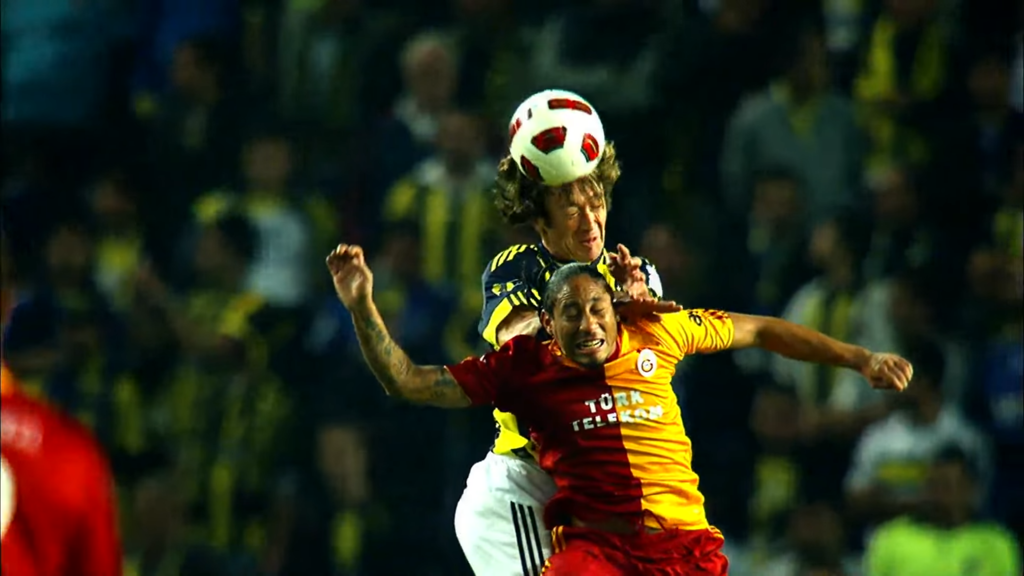The Beginner’s Guide to Effective Heading in Football

Heading in grassroots football is a controversial issue — particularly in relation to youngsters. But it’s an integral part of the game, so when players are old enough to start heading the ball, it’s a good idea to work on technique and timing.
Whether it’s a defender, a midfielder or an attacker, rising to meet the challenge with power, control, direction and timing is an art form that takes years of practice. Forwards in particular have to work tirelessly on their heading technique in order to beat goalkeepers while under pressure from defenders.
Football skills require hours of repetition, drills and hard work on the training pitch — and heading is no different! To help you work on your heading ability, or the ability of those you coach, we’ve compiled a beginner’s guide to heading in football. And as long as you restrict under-14s to one training session and month and adults to one session a week, you should start to see improvements fairly quickly.
Basic Heading Techniques
Heading a football involves mastering a range of fundamental techniques, including body positioning, timing, and contact points. Here's a breakdown of these basic techniques.
Body Positioning
Make sure your body is properly aligned with the flight of the ball. Position yourself to make contact with the forehead, not the top of the head. This isn’t just painful — it also makes controlling the ball almost impossible.
Eyes on the Ball
Maintain focus on the ball throughout its trajectory. Keeping your eyes on the ball enhances precision and helps anticipate its path.
Timing
Develop a sense of anticipation to gauge the ball's trajectory accurately. This will become instinctive as you progress. Timing is crucial for a successful header, allowing you to meet the ball at the best possible moment.
Jumping Technique
Perfect your jumping technique to reach the ball in a way that maximises power and keeps the headed shot below the crossbar. If you’re defending, you can usually use an opposition player’s body for leverage. Timing your jump well contributes to the power and direction of the header.
Contact Points
Your forehead should always be the primary contact point. This provides a larger and flatter surface for a more controlled and accurate header. Of course, you’ll learn to learn different areas of your forehead to add spin, increase the power of your headers and deliver those clever flicks that take opposition players by surprise.
Develop skills for different types of headers, such as defensive clearances, attacking headers and flick-ons. Coaches can introduce position-specific movement patterns to enhance versatility.
Simple Heading Drills for Grassroots Football Players
As long as you have some high-quality footballs, you can set up three effective heading drills quickly and easily. Grab yourself some football markers, some portable football goals, and your favourite football boots — it’s time to improve your heading technique.
Up and Down Mastery Drill
The primary objective of the up and down drill is to improve accuracy and control in heading.
Players form a line facing the coach. The coach throws the ball to each player, who must head it upwards and then control it upon the descent.
Emphasize proper body positioning, using the forehead, and maintaining eyes on the ball. And remember, repetition is the key to improvement. Players should perform 10 headers each to add consistency to the pursuit of an excellent heading technique.
Heading Under Pressure Drill
This is a higihly effective heading drill designed to enhance heading proficiency in challenging situations.
Create a semi-circle of players around the goal. The player in the center receives crosses from different directions and must successfully head the ball into the goal.
Develop the ability to handle various flight paths of the ball and make accurate headers under defensive pressure. And consider ntroducing defensive players to increase the difficulty of the challenge with real-world scenarios.
Heading and Finishing Drill
Use this simple heading drill to combine heading skills with finishing ability.Players start at the edge of the penalty area. A feeder delivers a cross, and the player must head the ball towards the goal, aiming for specific target zones.
Improve your heading accuracy while incorporating the goal-scoring element. As your technique improves, keep pushing yourself by increasing the difficulty of the drills. For example, you could introduce defenders to simulate match scenarios — requiring players to navigate defensive challenges before heading.
Practice Your Heading Safely
According to official FA guidance, children shouldn’t do any heading in training until they reach the under-12 level. And even then, under-12s should only practice heading once a month — with a maximum of five headers. Under-13s are allowed one training session per week featuring headers.
Only when children reach under-14 level are they allowed to increase their weekly headers in training to 10. The FA also recommend making heading a low-priority training technique for all young players. More details on the FA’s Heading Guidance initiative can be found here.
Stick to the following guidelines to minimize the risks associated with heading in football.
Limited Repetition
It is recommended to limit heading practice to 10 headers per session and include heading practice in only one session a week. This guideline aims to reduce overall exposure to heading while preserving technique development.
Youth and Adult Guidelines
Different age groups may have varying guidelines. For example, youth heading guidelines emphasize reducing exposure, while adult amateur guidelines aim to balance technique development with minimizing overall heading exposure.
Proper Technique Emphasis
Coaches should prioritize teaching proper heading technique, including body positioning, using the forehead, and maintaining eyes on the ball. This not only enhances performance but also reduces the risk of injuries. The right technique can make up for a lack of power!
Good Coaching
Instruct your young players to keep their eyes open, never lose sight of the ball, and focus on attacking the ball to head it safely using their forehead. This promotes a safer approach to heading that focuses on awareness and control.
Heading is an intrgral part of football, and no one wants to lose it. However, as the research into heading-related brain injuries continues, it’s best to play it safe and restrict headers during training sessions.

